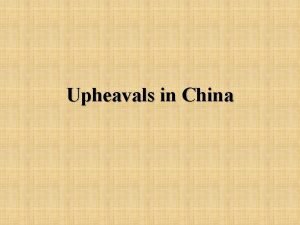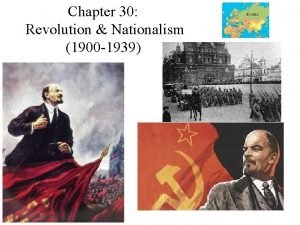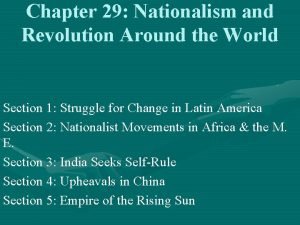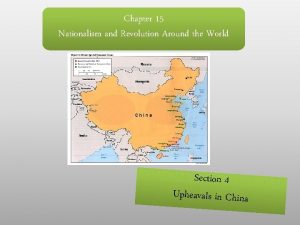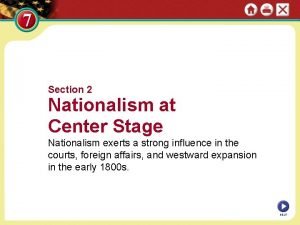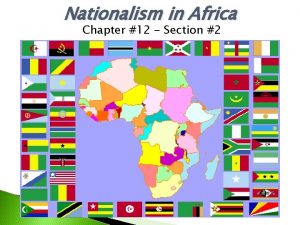Section 4 Upheavals in China NATIONALISM AND REVOLUTION








- Slides: 8

Section 4: Upheavals in China NATIONALISM AND REVOLUTION AROUND THE WORLD

The Chinese Republic in Trouble � After the death of the second president of China, local warlords seized power, and the influence of foreign powers increased. � In 1919, the May Fourth Movement sought to strengthen China and end foreign domination by rejecting Confucianism and many traditional practices. � Some Chinese also turned to Marxism.

Struggle for a New China � � � The Nationalist party of China, called the Guomindang, was first led by Sun Yixian and then by Jiang Jieshi. Jiang led the combined forces of the Guomindang and Chinese Communists in the Northern Expedition to defeat the warlords and unite China. When Jiang turned on the Communists, a civil war broke out in China. Communist leader Mao Zedong led an effort to gain the support of peasants by redistributing land. Mao’s forces were forced to make the Long March into northern China to avoid the Guomindang.

Japanese Invasion � Japan invaded Manchuria in 1931. � Then, in 1937, they bombed Chinese cities and invaded eastern China. � The Guomindang and Communists fought the Japanese together in this Second Sino-Japanese War.

Looking Ahead � By the end of World War II, China was split between the Jiang’s Guomindang and Mao’s communist Party. � As corruption grew in Jiang’s government, the Communists gained support and would eventually take control.



 Upheavals in china
Upheavals in china Chapter 30 revolution and nationalism worksheet answers
Chapter 30 revolution and nationalism worksheet answers Chapter 29: nationalism around the world answers
Chapter 29: nationalism around the world answers Nationalism and revolution around the world
Nationalism and revolution around the world Nationalism and revolution around the world
Nationalism and revolution around the world Nationalism and revolution around the world
Nationalism and revolution around the world Nationalism at center stage
Nationalism at center stage Chapter 7 section 2 nationalism at center stage
Chapter 7 section 2 nationalism at center stage What ideas did the measure contain the missouri compromise
What ideas did the measure contain the missouri compromise
